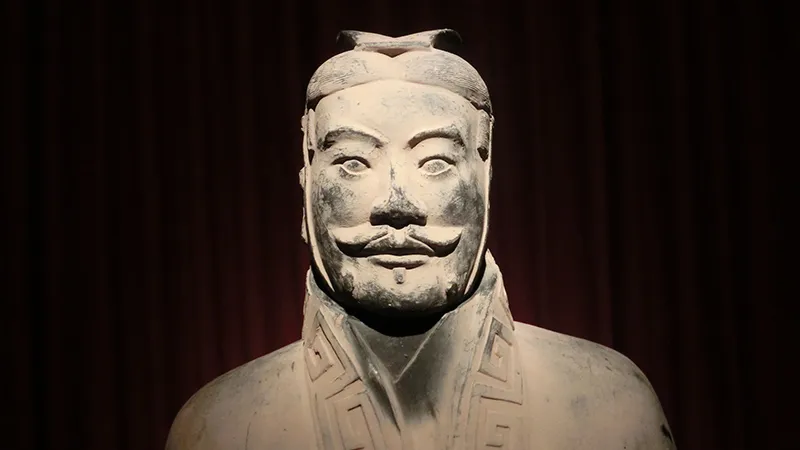Communist Party's elevation of President Xi Jinping’s to the core gives him greater influence over reshuffles of top ranks at gathering among other roundups

< style="color: #0069a6;">POLITICS AND SOCIETY
< style="color: #163449;">Party expands Xi Jinping’s political power, anoints him ‘core’ leader
The Communist Party elevated President Xi Jinping’s political status on October 27, referring to him as the “core” of its leadership ahead of the party’s five-yearly congress late next year. The higher status gives Xi greater influence over reshuffles of the top ranks at the gathering. A communique released on October 27 after the end of the Central Committee’s four-day sixth plenum in Beijing also said the party’s national congress would be held “in the second half of 2017 in Beijing”, marking the start of the formal preparations for the meeting. In addition, the plenum adopted two new sets of regulations governing the conduct of senior cadres – guiding principles for political life within the party “under new circumstances”, and revisions to trial regulations on party internal supervision. The communique said the party called on all members to “closely unite around
Central Committee with Comrade Xi Jinping as the core.”
Source: South China Morning Post
< style="color: #163449;">Record number of applicants in China vie for 'Iron Rice Bowl' jobs
Government jobs that offer lifelong job security are back in vogue, with a record number of applicants — nearly 1.5 million — competing for just 15,589 positions at this year's civil service entrance exams. The number of applicants is the highest since the exam was established in 1994.The most coveted job, which attracted 9,837 applicants, is one that involves receiving guests at the Beijing offices of the China Democratic League, one of the country's minor political parties with limited power. The number of applicants dipped slightly last year amid the ongoing anti-corruption campaign. Since its launch in 2012, the crackdown has nabbed over 1 million officials for graft and violating party disciplinary rules. The anti-graft campaign has also led to government departments' raising the bar for many jobs, with a bachelor's degree the minimum qualification for most, and some demanding a local household registration in the city where the vacancy is available as well as Communist Party membership. The position for receptionist may have attracted the most applicants because of its looser requirements and location in Beijing.
Source: Caixin Online
< style="color: #0069a6;">FOREIGN AFFAIRS
< style="color: #163449;">China least generous country in the world: poll
China is the least generous country in the world, according to a worldwide survey on generosity by the Charities Aid Foundation. The 2016 CAF World Giving Index is based on a poll of 1,000 respondents from 140 countries and regions, asking them if in the last month they helped a stranger, donated money to charity or volunteered their time. China ranked 140th place in the poll, behind Palestine, Yemen, Greece and the Democratic Republic of Congo, lifestyle website Shanghaiist reports. Only 24 percent of Chinese respondents said they had helped a stranger in the past month, 6 percent said they had donated to charity, and also only 6 percent said they had volunteered their time.
Source: Ejinsight
< style="color: #163449;">Dalai Lama to visit Arunachal Pradesh
Confirming the invitation to the Tibetan spiritual leader, a source in the office of Chief Minister Pema Khandu told The Hindu that the invitation was extended on October 9 and is aimed at bringing the spiritual figure to his followers in the border State. “The Dalai Lama has been invited to Arunachal Pradesh for a fortnight-long visit during March 2017, when he is expected to visit Tawang, Itanagar and the eastern districts of the state,” the official told The Hindu. He said that there was no specific religious occasion for the visit and that it was planned since the spiritual leader had a special link with the State, especially with Tawang as he came to India through the mountain route of Tawang. The timing of the announcement is significant as it comes days after China criticised Richard Verma, US envoy to India, for visiting Tawang that it declared as “disputed.” Responding to the Chinese criticism of the visit of the US envoy, the Ministry of External Affairs said that the visit was not unusual as he visited a province of India to which he was accredited. Dalai Lama had drawn criticism from Beijing for visiting Tawang during the annual Tawang festival in 2009 when he marked half-century of his exile from Tibet.
Source: The Hindu
< style="color: #163449;">Chinese firm that helped build islands in SCS wins contract with the Philippines
A Chinese state-owned infrastructure company that has helped build artificial islands in a disputed area of the South China Sea has signed a land reclamation contract in the Philippines, a rival claimant in the sovereignty dispute, according to a newspaper report. CCCC Dredging Co, a subsidiary of China Communications Construction Company, will carry out a 208-hectare land reclamation project in the harbour at Davao where Philippines President Rodrigo Duterte once served as a city major before assuming office in June, the Beijing Youth Daily reported. Chinese company will create land along an 8km stretch of coastline in Davao Bay. The artificial land will be used for government offices, businesses, housing, port terminals and industry, the report said. The project is expected to be completed by the end of 2019, it said.
Source: South China Morning Post
< style="color: #0069a6;">ECONOMY
< style="color: #163449;">US to keep anti-dumping duty orders on chlorinated isocyanurates from China, Spain
The US government determined on October 26 it would maintain the existing anti-dumping duty (AD) orders on chlorinated isocyanurates from China and Spain. The US International Trade Commission (ITC) concluded in a ruling that revoking the current antidumping duty orders on chlorinated isocyanurates from the two countries would be likely to lead to continuation or recurrence of material injury within a reasonably foreseeable time.
It has been the second "sunset review" since the United States issued AD orders on chlorinated isocyanurates from China and Spain in 2005. The AD margins on the products from China are from 75.78 percent to 285.63 percent and the AD rate on the products from Spain is 24.83 percent. The Chinese Ministry of Commerce has repeatedly urged the United States to abide by its commitment against trade protectionism and work together with China and other members of the international community to maintain a free, open and just international trade environment.
Source: Xinhua
< style="color: #163449;">Chinese companies lead global peers in innovation spending growth: report
Chinese companies led their global peers in research and development (R&D) spending growth, with an annual rate of 18.6 percent, according to the "2016 Global Innovation 1000 Study" report, released on October 26 by PricewaterhouseCoopers (PwC). A total of 130 Chinese companies were included among the 1,000 Global Innovation entities of 2016, up from 123 in the 2015 report. These companies spent 46.8 billion US dollars in total on R&D.
As a result, R&D spending contributed by Chinese companies also increased, up from 5.8 percent in the 2015 report to 6.9 percent in this year's report. With R&D spending at 2.2 billion US dollars and R&D intensity (R&D divided by total sales) of 13.6 percent, Alibaba was the biggest R&D spender among such public companies. Huawei, although a non-public company and not on the list, spent 59.6 billion yuan (8.8 billion US dollars) on R&D in 2015, making it the highest spender in China, according to the report.
Source: Xinhua
< style="color: #163449;">China cross-border e-commerce quality monitoring center launched
A national quality monitoring center for cross-border e-commerce was launched on October 26 in Hangzhou, China's e-commerce capital. The online system, approved by the General Administration of Quality Supervision, Inspection and Quarantine in June 2015, went into operation after more than a year's preparation. The platform will form a big data center to monitor cross-border e-commerce and will have several functions, such as risk monitoring, evaluation and treatment, quality source tracing, and credit rating. China currently has over 5,000 cross-border e-commerce platforms. The Ministry of Commerce predicts the volume of cross-border e-commerce will reach 6.5 trillion yuan in 2016 and that it will soon account for 20 percent of China's foreign trade.
Source: Xinhua
< style="color: #0069a6;">SCIENCE AND TECHNOLOGY
< style="color: #163449;"> Malaysia keen to learn from China
Malaysia is keen to expand ties with its biggest trading partner China to include cooperation in digital economy, as it enters the “Year of Internet Economy” next year. Malaysian Prime Minister Najib Razak said Malaysia has much to learn from China’s advancement in Internet technology. “I encourage collaborations and cooperation in this sector for both our mutual benefits. The potential is limitless, and all that is required is to explore the opportunities,” he said. Najib was delivering a keynote speech at the Malaysia-China Digital Economy Forum here ahead of his visit to China at the end of this week. Jointly organised by Malaysia-China Business Council (MCBC) and Huawei, the forum brought together industry players from both countries to brainstorm on accelerating the digitalisation of the Malaysian economy. Najib said the Government’s initiatives for digital economy in Budget 2017 included the establishment of the first-ever Digital Free Trade Zone (FTZ) in the world with attractive incentives and modalities.
Source: South China Morning Post
< style="color: #163449;">Accompanying satellite sends back images of Tiangong II, Shenzhou XI
An accompanying satellite launched from space lab Tiangong II on October 23 at 7:31 am has sent back images of the space lab and spacecraft Shenzhou XI. The satellite, which weighs 47 kilograms and is the size of a printer, was launched into space aboard Tiangong II on September 15, said the Technology and Engineering Center for Space Utilisation under the Chinese Academy of Sciences. Lyu Congmin, a scientist with the Chinese Academy of Sciences, said that this image was taken by the satellite at a distance of some 29 meters from Tiangong II and Shenzhou XI. Astronauts Jing Haipeng and Chen Yong used cameras to record the videos of the accompanying satellite flying about 100 meters beneath the Tiangong II and Shenzhou XI in space. At the end of October, the satellite will orbit close to Tiangong II and Shenzhou XI and take photos with the high-resolution camera installed on it. It will also carry out space experiments with Tiangong II to expand the use of space.
Source: Xinhua
< style="color: #0069a6;">BIBLIOGRAPHY
Hu Shuli, “Transparency, Better Institutions Needed to Push Anti-Corruption Drive Forward”, Caixin Online, October 25, 2016
Wang Xiangwei, “How Xi Jinping can use his new power as ‘core’ of China’s Communist Party”, South China Morning Post, October 28, 2016
Tadit Kundu, “Politics be damned, Chinese and Indian economies are closer than ever before”, South China Morning Post, October 28, 2016
Panos Mourdoukoutas, “Why India Is A Better Investment Bet Than China”, Forbes, October 26, 2016
Zhang Zhongkai, ‘Commentary: No need for China to fake steady GDP growth’ People’s Daily, October 26, 2016
Hu Weijia, ‘India may face an uphill battle as it attempts to woo Chinese component manufacturers’ Global Times, October 25, 2016
Peter Kammerer, “Time to fix Hong Kong’s wasteful, throwaway society”, South China Morning Post, October 24, 2016
< style="color: #0069a6;">Contributors:
- Sreeparna Banerjee
- Pratnashree Basu
- Ambalika Guha
- Swagata Saha
The views expressed above belong to the author(s). ORF research and analyses now available on Telegram! Click here to access our curated content — blogs, longforms and interviews.




 PREV
PREV

